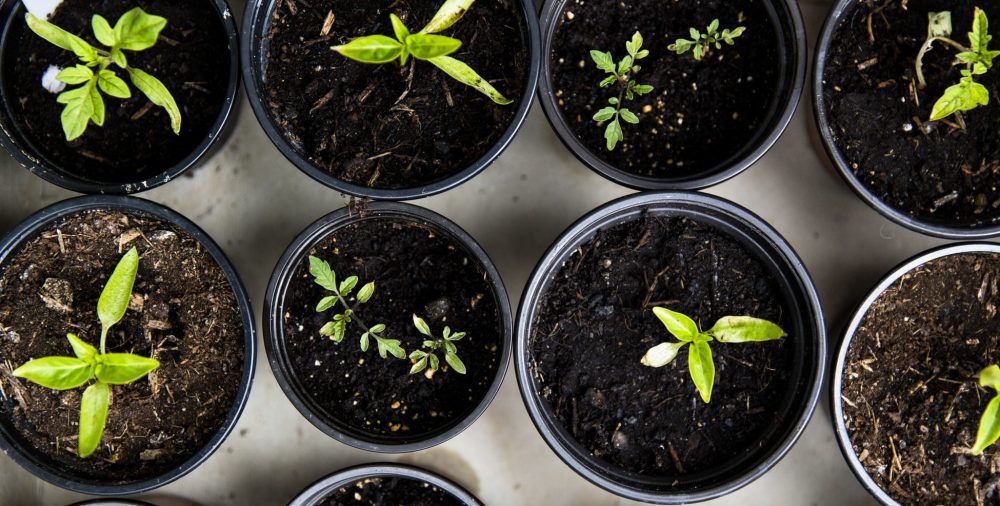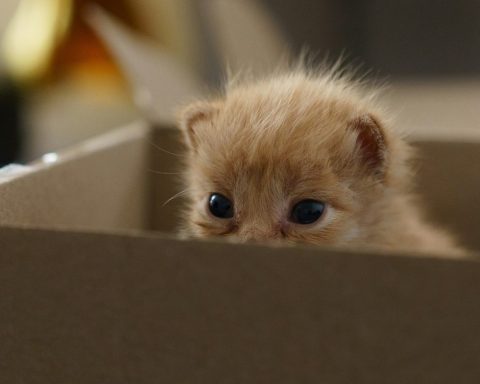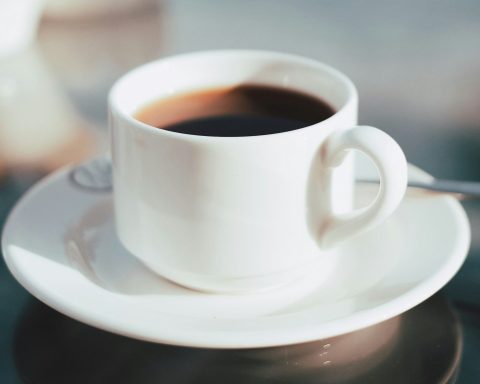 Jane Roberts is a a GP Partner in North Liverpool and Joint Clinical Lead for Mental Health at Liverpool CCG. She is on Twitter: @Jane_0308
Jane Roberts is a a GP Partner in North Liverpool and Joint Clinical Lead for Mental Health at Liverpool CCG. She is on Twitter: @Jane_0308
The day had been unusually tough.
Monday morning ‘On-Call ‘ had included the cataclysmic event of a patient calling to report finding her husband hanging from the bannister in the family home. She was having a panic attack and reception had put through the call as urgent. The story ached with poignancy and pain and the grief being expressed was visceral. And there was other stuff lurking in the back of my mind; a patient complaint, a coroner’s report to write.
My shoulders and lower back were getting ever more tense and my brain tired; the day was long. Thirteen hours after leaving the house that morning I was back home and frazzled. I needed to eat, connect with my family and prepare for the next day.
But first, the daily,evening ritual of watering the plants in the newly acquired greenhouse; a happier consequence of Covid 19’s devastation on our lives when long haul holidays evaporated and staycations became the new norm.
I am a newbie to this world of growing and greenery but as I opened the door in the gloaming evening light the air in the greenhouse felt softer and I started to feel my adrenergic drive subside.
As I opened the door … in the greenhouse …. I started to feel my adrenergic drive subside.
The gentle activity of watering the plants and flowers and observing the small changes from the previous day brought a welcome calming effect and a lightening of mood. My pulse slowed down and shoulders relaxed.
The liminal space of the glasshouse seemed to offer a tangible benefit.
Could pottering in the greenhouse really mitigate against the toxic impact of work related stress upon our brains?
There is no mistaking the pressure our profession is under. Even before the emergence of Covid-19 we were sinking. The 2019 GMC Report shows GPs reporting the lowest levels of job satisfaction and the highest levels of stress since 1998.1
‘Burnout’, a term coined by NASA to describe a rocket empty of fuel, still in orbit but going nowhere, is an occupational hazard and evidence of a system in jeopardy. Now included in ICD – 11 Burnout is understood as a psychological syndrome resulting from chronic workplace stress . There are three dimensions : exhaustion; increased distancing or negativity about work and reduced professional efficacy.
Burnout, a term coined by NASA to describe a rocket empty of fuel, still in orbit but going nowhere.
Like many before me who have written on this highly topical subject, individual doctors are not the cause of nor the answer to occupational burnout.2 It is a systemic problem needing addressing in the workplace rather than at an individual level. Furthermore, there is much about medicine as a discipline which both lies far beyond individual control and which can contribute to making us stressed and sick. That medicine’s historical roots lie in white patriarchy and racism, for example, has plagued the profession and harmed BAME medical students and doctors for too long.3
However, placing structural issues respectfully aside, looking after ourselves can make a real difference. We do have agency to minimise harm and extenuate the multiple stressors which we face daily. So what is it about the green space that can come to our rescue? How can hanging out in the greenhouse refuel our tank?
Sue Stuart- Smith, a psychiatrist, psychotherapist and doyenne of gardening has written a beautiful book “ The Well-Gardened Mind’ which explores this very topic.4 In this paper I will delve deeper into Stuart-Smith’s tour-de-force and examine how getting our hands in soil can loosen up our bodies and sooth our brains.
I am a debutante in the garden. It is relatively new territory to me not having grown up in a gardening family but there has been something instinctive about its lure. The greenhouse purchase might have been considered impulsive but I wonder if it feeds into the imagination and the stored ideas and stories we carry with us; for as Stuart-Smith writes ‘The garden is as much an imagined place as it is a real one’. Childhood reading of The Secret Garden, by Frances Hodgson Burnett, and Tom’s Midnight Garden, by Phillipa Pearce, has likely watered this idea without conscious awareness of its germination. More recently, the luminous prose of O’Farrell in her novel Hamnet demonstrates the power good writing exerts on our imagination:5
‘Gardens don’t stand still: they are always In flux. The apple trees stretch out their limbs until their crowns reach higher than the wall. The pear trees fruit the first year, but not the second, then again the third. The marigolds unfold their bright petals, unfailingly, every year, and the bees leave their skeps to skim over the carpet of blooms, dipping into and out of the petals.”
Life as cyclical and regenerative is a Jungian view, where life and nature are considered to be on a continuum. Humans are but one small part of the picture with our personal trajectories mere seconds in the long arc of life.
It may seem an obvious declaration to speak of the salutogenic (health-giving) properties of spending time outside, ideally in a garden where we can dig and weed, and sit and stare, but the truth is we are spending an ever increasing time indoors in front of a screen, any screen. And at work we are increasingly submerged under a bottomless administrative task list, whilst being physically and emotionally more distanced from patients and our colleagues. We need a life boat to stop us sinking. The in-between space of a garden or greenhouse is increasingly being shown to be more than a metaphor for well-being, but is an evidence-based sanctuary for mental repair, and is possibly that very ‘life boat’ exhausted GPs need.
Neuroscience has demonstrated that burnout leaves a cerebral footprint.
Neuroscience has demonstrated that burnout leaves a cerebral footprint.6 The amygdala enlarges, contributing to doctors becoming more reactive, less thoughtful; whilst connections between the amygdala and prefrontal cortex weaken making it harder to temper negative emotions. Loss of volume of the prefrontal cortex causes memory loss, inattention and emotional dysregulation. These effects are real. At the same time, our depleted grey matter is being required to complete ever more task-focussed activities which add a double strain to our beleaguered mental functioning.
Walking into the shelter of the greenhouse, unaccompanied, opens up a benign world of sensory pleasure where we can unwind and inhale and allow our emotional brain to re-set. This sanctuary offers us a screen-free space that is not ours to dominate, unlike our man-made work spaces, where we seek control and are frustrated when our efforts are thwarted. Here, in this peaceful space, nature exerts her own pulsatile life force and moves inexorably from season to season regardless of our efforts to interfere. How refreshing to be let off the hook and allowed to sit back. To take up the trowel and release the scent of ‘geosmin’ (wet earth) and stir the soil to disturb the soil bacteria; both of which have been show to positively impact on our serotonin levels and reduce brain inflammation.7 The very act of growing and caring for plants of itself, especially from seed, brings neurochemical reward. Stuart-Smith reminds us that nurturing brings feelings of calmness and contentment through the action of oxytocin and the release of beta-endorphins; an arcane virtuous cycle which has brought obvious evolutionary benefit (ref 4 p37-8).
The very act of growing and caring for plants … brings neurochemical reward.
Growing fragrant herbs and aromatic plants perfumes the air and awakens our olfactory system. Smell “is the most powerful and primitive of our senses because the nose is in direct communication with the amygdala and the centres for emotion and memory deep within the brain” (ref 4, p 84). By connecting with our senses, feet grounded, hands busy, our minds can pause from the thought-treadmill and excessive rumination we are prey to in the throes of occupational stress.
The silence of the green arbour contributes to the sensory re-boot. The greenhouse insulates against the roar of traffic and human chatter and offers an aural space, empty of interruptions which punctuate so many other arenas of our lives. Nancy Kline, a coach and creator of ‘The Thinking Environment’ has recently written about the impact of the serial interruption as a physical assault on the brain and of its disruption to our thinking.8 Kline credits the pervasiveness of interrupting, seen as a cultural norm, as a major factor in stimulating dysfunction in relationships and polarising opinion. When we are engaged in a mindful activity, such as gardening, our thoughts are unfettered and can follow their own line of enquiry. Ideally we let go of conscious thinking and take a break from the ’fast–thinking’ that we are accustomed to, indeed encouraged to adopt in work. Our pavlovian reactivity is curbed and our reactivity to situations, often humanly complex and worthy of much more time than our pressured surgeries permit, can switch off. This is where the living-breathing tableau of nature can allow our creativity to emerge, so often dormant in the pressure cooker of an on-call surgery. Whilst the clinical environment requires us to be intentionally focused we also need down-time or ‘slow time’ when thoughts are unfettered and can follow their own flow.
As I plant snowdrop bulbs and sow foxglove, nigella and cornflower blue seeds into baby-sized pots, my mind is both unfurled and opened up towards a future time and the present pressures recede. In the soft light and oxygen enriched air of the greenhouse I am attuned to its cyclical rhythm. The seeds have their own in-built programme for germination which cannot be hastened, only admired. I can let them down by under or over watering, (and all beginners make mistakes), but I am a passive observer to the process and that is balm when we are required to be active agents every minute of our working day. Little wonder our brains remain active in sleep when they are turbo-charged throughout the day.
The garden calms at a physiological level dampening down the sympathetic autonomic drive.
In contrast, the garden calms at a physiological level dampening down the sympathetic autonomic drive on the cardiovascular system within minutes (Cortisol takes longer, 20-30 minutes to drop).9 Stuart-Smith writes about how ‘caring for plants is intrinsically a mindful activity’ (ref 4 p.75) and quietens a racing mind . Such a positive mental state decreases amygdala activity and promotes a more integrated neural connectivity; thus repairing the insidious insult from burnout.
Caring for plants is intrinsically a mindful activity.
Practising medicine during the Covid-19 pandemic has seen the inexorable rise of transactional clinical practice further accelerated. The majority of our consultations are remote thus depriving doctors of the dopamine buzz we feel when human interaction is mutually positive and life-affirming. To counter the sterility and reduce distress we might turn to nature and music, for both have a ‘calming and organizing effect on our brains’ as observed by the luminary neurologist Oliver Sacks. Working with patients with chronic neurological disorders he postulated that nature can effect ‘ deep changes in the brain’s physiology, and perhaps even it’s structure’.10
Burnout is associated with excessively long work hours with inadequate recovery time which in turn impairs our stress regulation mechanisms. The result is a disconnection from our bodies as we drive them ever harder and ignore the quieter need for rest and recuperation. The culture of medicine is long populated with super-hero stallions who survive on four hours sleep, excessive drinking or extreme sports, but they are the outliers to the Gaussian distribution of ‘ the regular doctors’ ploughing their furrow. We are those doctors whose energy levels are steadily eroded and whose enthusiasm for medicine and motivation to care is weathered. The opportunity to step off the treadmill, inhale, slow down and see natural beauty can be a life-affirming halt in the decline.
In general practice we are peddling ever faster to stay afloat.
Winter is a slow time in nature where growth is deep and hidden. In contrast in general practice we are peddling ever faster to stay afloat and this year facing not only flu outbreaks but Covid19 spikes and the attendant additional work of Covid 19 vaccination campaigns.
I leave the treadmill behind and step into the greenhouse, an outpost of quiet serenity clothed in late autumn mists. Time passes lost in the joyful job of planting sweet pea and corn flower blue seedlings which have out grown their baby-sized pots.
Already I can imagine the riot of colour the fragrant sweet pea flowers will bring in the spring , bursting with life as they spiral upwards like jack-and- the- bean stalk illustrations.
Time passed in the garden refuge allows the mind to decompress and rejuvenate before returning to the ‘pressure-cooker’ of the next working day.
References
1. GMC Report (2019) ‘Caring for doctors, caring for patients’. https://www.gmc-uk.org/-/media/documents/caring-for-doctors-caring-for-patients_pdf-80706341.pdf
2. Gerada, C. (2020) Understanding Burnout . BMJ 2020;369:m1595. https://doi.org/10.1136/bmj.m1595
3. Harnessing the outrage: it’s time to tackle racial bais BMJ: 2020; 368;m341
4 Stuart-Smith, S. (2020)The Well-Gardened Mind: Rediscovering nature in the modern world. William Collins, London.
5 O’Farrell, M. (2020) Hamnet. Tinder Press. p 330-331
6 Red Whale GP Education. Burnout in health professionals. https://www.gpupdate.co.uk/SM4/Mutable/Uploads/pdf_file/MH_burnout.pdf ( last accessed 29/11/20)
7 Lowry , CA Smith, DG, Siebler, PH, Schmidt, D et al. (2016) The Microbiota, Immunoregulation and Mental Health: Implications for Public Health. Current environmental health reports, (3) 270-286
8. Kline, N. (2020) The Promise That Changes Everything: I Won’t Interrupt You by Nancy Kline, Penguin.
9. Ulrich, RS. (1981).Natural versus urban scenes: Some psycho-physiological effects .Environ Behav 13, 523-556
10. Sacks, O. ( 2019). Why we need gardens in Sacks, O (2019). Everything in its place: First loves and last tales. Alfred A. Knopf
Featured photo by Markus Spiske on Unsplash






